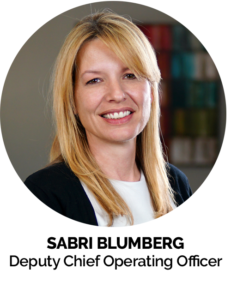Last updated on October 17th, 2025 at 01:13 pm
 If you’re a general dentist, your practice is only as strong as your hygiene department.
If you’re a general dentist, your practice is only as strong as your hygiene department.
You may have heard this before. And it’s true. In fact, it’s the first thing I cover when meeting a client who’s newly enrolled in the MGE program.
And chances are, you’ve seen all types of hygiene/recall programs that can allegedly do “wonders” for your practice; but if these programs truly delivered, why does such a small percentage of the industry have consistently growing, profitable hygiene departments?
Hygiene Department Misinformation
Having met and consulted with thousands of dentists, I’m more than comfortable stating that the industry at large has it wrong when it comes to building a successful Hygiene Department. For that matter, I’d estimate that maybe 5% of the doctors I’ve spoken to have found the expected level of success in this area.
Why? Well, it’s a combination of things. But to start, I’d say that much of what the average dentist has been told about hygiene, recall and patient retention “sounds good,” but doesn’t pan out in the real world. And what they may have learned that could work is either poorly implemented or not implemented at all. And finally, meeting failure or lack of expected results, many of these doctors develop attitudes or ideas about the Hygiene Department that more or less dooms any future success in the area.
Ultimately, this failure to pull off a successful Hygiene Department costs the average doctor a considerable amount in lost profit and up to 90% of their patient base. And worse than this, it can potentially have a negative impact on these patients’ dental health.

Over time, we’ve had the opportunity to analyze various programs and approaches to hygiene, recall and retention, including testing and tracking new ideas and techniques as they come about. The goal has always been simple, what’s the best way to direct our clients towards building an enormously successful hygiene department. Through trial and error, follow-up and the like, we’ve discovered what we feel is the best road map available. In other words, the one that most consistently produces (by statistic) a wildly successful Hygiene Department. This can be used to build a hygiene department that covers your overhead and makes a profit all by itself—before the doctor even picks up a handpiece!
Schedule a free consultation here to learn more or visit our online training platform at www.DDSsuccess.com.
Now, I thought it would be fun to share and “bust” the top five Hygiene and Patient Retention “myths.”
Myth #1: “Hygiene is not profitable”
Hygiene can (and should) be highly profitable. We’ll run all the numbers in detail at our seminars, but there are offices around the country producing and collecting $1 million, $2 million or more from hygiene alone, and a good portion of that is profit. And that’s residual income every month that the doctor doesn’t even need to work for himself or herself.
So it is definitely possible, and you can do it too. The following myths shed some more light on why most offices aren’t doing it.
Of course, certain PPO and HMO plans can make it nearly impossible to operate a hygiene dept profitably. If you would like to explore your options for phasing out of low-paying insurance plans, do a free Fees & Plans Analysis here.
Myth #2: “It’s difficult to keep patients in hygiene”
 As I mentioned above, the average dentist over time loses up to 90% of their patient base over time.
As I mentioned above, the average dentist over time loses up to 90% of their patient base over time.
That means that if you track new patients for the average doctor, then fast forward 10 years, approximately 10% of those patients will still be regularly complying with the practice’s recall program (i.e. showing up routinely for 3, 4 or 6 month recall appointments). That is terrible.
A dental office should be retaining at least 60-80% of its patients in their recall program. Sure there’s going to be some attrition. But up to 90%? Yeah…that’s too much.
So why do so many offices fall short?
The answer has to do with another myth:
Myth #3: “An “Active Patient” is someone who’s been in within the last 18-24 months”
How often are you supposed to see the dentist?
If you ask this question to anybody on the street, they’ll give you the same answer: “Twice a year” or “Every six months.”
 So, if a patient hasn’t been to your office for a year or two, how can they possibly be considered an “active patient”? They are not in your recall program at that point. And while the 18-24 month number might be nice when measuring goodwill during a practice appraisal for sale or purchase, it’s not a usable metric for building your hygiene department.
So, if a patient hasn’t been to your office for a year or two, how can they possibly be considered an “active patient”? They are not in your recall program at that point. And while the 18-24 month number might be nice when measuring goodwill during a practice appraisal for sale or purchase, it’s not a usable metric for building your hygiene department.
A dentist might run a report from their practice management software using this definition of an active patient (18-24 months), and think they’re retaining 60, 70, or 80% (or more) of their patients, when in fact the percentage showing up regularly to see the hygienist is considerably lower.
So yes, most doctors have difficulty getting patients to come in regularly for hygiene visits.
But some don’t. Some dentists actually retain 80% of their patients in their recall program.
How?
Well, it has nothing to do with luck or having patients with a “high dental IQ.”
It starts with how they educate their patients from the very first visit. If you do this correctly, you patients will take it to heart and stay with the practice. Done incorrectly, it goes in one ear and out the other.
These successful offices put in the work, making hygiene a priority for the staff and the patients, and have effective systems for recall, reactivation, confirmations and internal marketing. Their hygienists know how to build strong relationships with patients and continuously reinforce the philosophy of the practice.
(Related: New Patient Ideas Increasing Treatment Acceptance and Retention)
Myth #4: “There are always hygiene cancellations”
 The average dental office schedules 8 appointments per day for each hygienist. Then cancellations hit (some days more than others) and the hygienist sees between 5-7 patients that day. The rest of the day might be spent on the phone, helping in other areas of the office or sharpening instruments.
The average dental office schedules 8 appointments per day for each hygienist. Then cancellations hit (some days more than others) and the hygienist sees between 5-7 patients that day. The rest of the day might be spent on the phone, helping in other areas of the office or sharpening instruments.
Needless to say, this is NOT efficient scheduling.
The answer isn’t to double-book appointments. It’s to get the hygienist more involved.
I’m not saying the hygienist should spend hours every day confirming patients. But the hygienist must be more involved with scheduling. Why? Well, to start, your hygienist will typically have a great relationship with many of your patients. After all, that’s who your patients spend the most time with over the years.
The hygienist should schedule every patient they see for their next appointment. The hygienist knows how long to schedule the appointment for (might be :30 or 1:20 depending on the patient), allowing you to schedule more accurately and fit more patients in each day. The patient is also less likely to cancel on an appointment personally made with the hygienist.
Confirmation texts, email, and cards can also be made more personal by including the hygienist’s name. “Sandy is looking forward to seeing you on Thursday!” Or something along those lines.
Generally, the more responsibility the hygienist takes for their patients, the better it will go. The hygienist should consider it their responsibility to make sure patients understand the importance of hygiene, show up to their appointments, and that the productivity of the Hygiene Department is continually improving.
We’ll lay out the exact methodology for this at www.DDSsuccess.com, but as a general rule, hygiene cancellations should never be any higher than 10% or 15%. And if you’re scheduling more than 8 patients a day per hygienist, that’s not too bad.
Myth #5: “Hygienists are too expensive”
I know, the average salary for a hygienist is a lot higher than it used to be 20 years ago. Some doctors consider the insurance payouts for a prophy, the amount of downtime their hygienist has (because they have too many cancellations and poor patient retention) and think there’s no way it can be profitable.
Again, this is not the case. In a well-run hygiene department, each hygienist should be producing at least $1,200-$1,500 or more every day. The majority of this production being bread-and-butter hygiene…i.e. recall.
And note that this doesn’t include added value to the doctor’s schedule. The hygienist’s role as an educator assisting with case acceptance is invaluable. This means that before the day starts, the doctor and hygienist need to be coordinated on what they should be discussing with each patient. You may also consider an incentive structure that motivates your hygienists to expand the hygiene department and assist in “co-diagnosing” and educating patients on their treatment.
So, there you have it. The five myths…along with WHY they are myths. I hope this helps. When you do it right, a big, booming Hygiene Department is a win-win for all concerned: it’s the foundation for a successful dental practice while at the same time a means to help your patients maintain their long-term dental health.
And I know I’ve mentioned it a bit, but if you really want to master this area, I recommend you scheduling a free consultation here to find out more about MGE and see if it is a good fit for you.
I hope this helps!



No Comments
Be the first to start a conversation